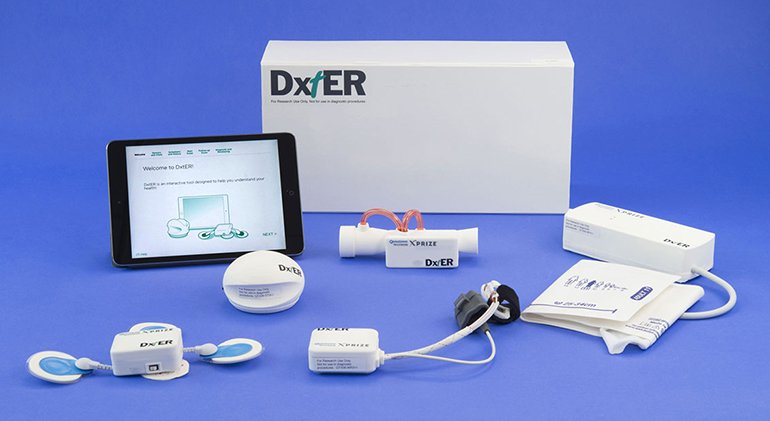This is GizmoMD
Dear Friends, It’s been a while. If you’ve been wondering what happened to Medgadget — you’re not alone. It’s been a few years since anything was published, and like many of you, I’ve missed the excitement of discovering and sharing the latest in…
The Latest
Lab-Grown Skin That Mimics Fibrosis Could Accelerate Personalized Therapies
For the 300,000 Americans living with scleroderma—a rare autoimmune disease that causes tissue scarring in organs like the lungs, liver, and skin—treatment options remain limited and unpredictable. Now, researchers at Tufts University and Dartmouth’s Geisel School of Medicine have developed a 3D tissue model that replicates the complexity of fibrotic disease more accurately than traditional lab methods. This breakthrough could lead to faster, more personalized therapies for scleroderma and other conditions involving fibrosis. The model is built using skin and blood samples from scleroderma patients and includes two key immune cells—T cells and macrophages—alongside connective tissue cells. These immune cells…
Gecko-Inspired Nanoparticles Deliver Chemotherapy With Precision
Inspired by the microscopic gripping power of gecko toes, researchers at the University of Colorado Boulder and CU Anschutz have developed a new cancer therapy that adheres tightly to tumors and delivers chemotherapy drugs over several days. The innovation centers on “soft dendritic particles” (SDPs)—biodegradable nanoparticles engineered to mimic the branched, hair-like structures found on gecko feet. These nanostructures exploit Van der Waals forces to stick to slippery surfaces, much like geckos climbing glass. The team used an FDA-approved polymer, poly lactic-co-glycolic acid (PLGA), to fabricate the particles, then infused them with chemotherapy drugs. When applied to bladder tumors in…
3D-Cultured Liver Organoids Developed With Organ-Specific Vasculature
Researchers from the Institute of Science Tokyo and Cincinnati Children’s Hospital have engineered liver organoids with authentic, organ-specific vasculature—marking a major leap in regenerative medicine and disease modeling. Using a novel 3D culture method called inverted multilayered air–liquid interface (IMALI), the team coaxed four types of human progenitor cells to self-organize into dome-shaped liver organoids approximately 3 mm in diameter. These included hepatic endoderm cells, mesenchymal cells, arterial endothelial cells, and liver sinusoidal endothelial progenitors (LSEPs), which are critical for replicating the liver’s unique blood vessel architecture. The breakthrough addresses a long-standing challenge in organoid research: replicating the liver’s complex…
Dental Device Uses LED’s to Induce Analgesia and Promote Healing
Griffith University researchers have found that light-based technology that may accelerate healing and reduce pain in dental procedures—without relying on pharmaceuticals or injections. The device, called Nuralyte, out of Canberra City, Australia based startup Dentroid, uses patented multi-wavelength LEDs to stimulate cellular activity through a process known as photobiomodulation (PBM). By targeting mitochondria—the energy-producing structures inside cells—Nuralyte enhances respiration and activates genes linked to bone and collagen formation. In lab studies, the device improved the function of bone-forming stem cells, suggesting potential applications in regenerating tissue around dental implants, periodontal sites, and post-surgical wounds. The stimulation is dose- and wavelength-specific,…
UK Biobank Completes World’s Largest Whole-Body Imaging Project
After more than a decade of planning and execution, UK Biobank has completed the largest whole-body imaging study in history—scanning the brains, hearts, abdomens, blood vessels, bones, and joints of 100,000 volunteers. Each participant underwent a five-hour appointment that generated over 12,000 magnetic resonance images (MRIs), along with ultrasound scans and bone density measurements. These imaging datasets are now being integrated with 15 years of lifestyle, genetic, and clinical data from the same individuals, creating a uniquely rich resource for biomedical research. The scale of the project—more than ten times larger than any previous imaging study—has already led to over…
Low-Cost Handheld Device Diagnoses and Treats Oral Cancer
In regions where oral cancer is common and access to care is limited, early detection and treatment are often out of reach. To address this, researchers have developed a compact, low-cost intraoral device that combines diagnostic imaging with photodynamic therapy (PDT)—enabling clinicians to identify and treat early-stage oral cancer in a single visit. The device, described in Biophotonics Discovery, uses a smartphone-coupled probe equipped with LEDs and filters to capture white-light and fluorescence images of suspicious lesions. It also includes laser diodes that activate a light-sensitive compound (PpIX) in cancerous tissue, destroying abnormal cells while sparing healthy ones. Preclinical tests showed…
3D-Printed, Living Lung Tissue Developed to Study Respiratory Diseases, Treatments, and Personalized Medicine
Researchers at UBC Okanagan have developed a 3D bioprinted model that closely mimics the complexity of living lung tissue, marking a major advance in how scientists study respiratory diseases and test new treatments. Led by Dr. Emmanuel Osei, the team used a specialized bioink composed of polymer-modified gelatin and polyethylene glycol diacrylate to print a hydrogel scaffold embedded with multiple cell types and vascular channels. This structure replicates the mechanical and biological properties of human airways, allowing researchers to observe cellular responses to disease triggers in a more physiologically relevant environment. The model was validated by exposing it to cigarette…
Wireless Arm-Worn Wearable Monitors Real-Time Hydration Levels
Dehydration is a silent but serious health risk—especially in hot climates, high-performance environments, and among vulnerable populations like the elderly or those with chronic illnesses. Yet tracking hydration in real time has remained elusive. Traditional methods like urine tests, blood draws, or weight measurements are invasive, slow, and impractical for continuous monitoring. Now, researchers at the University of Texas at Austin have developed a wearable sensor that could change the game: a lightweight, noninvasive device that continuously monitors hydration levels using bioimpedance and wirelessly transmits data to a smartphone. The sensor works by sending a small, safe electrical current through…
Photoacoustic and Ultrasound Imaging Combined With AI Used for High-Resolution Breast Imaging
Researchers at the University at Buffalo have developed a new breast imaging system that could dramatically improve cancer detection—without the discomfort of traditional mammograms. Called OneTouch-PAT, the system combines photoacoustic and ultrasound imaging with artificial intelligence to produce high-resolution 3D scans in under a minute, all without painful compression or radiation. Instead of lying down or undergoing breast squeezing, patients stand and gently press their breast against an imaging window. The device then performs alternating photoacoustic and ultrasound scans, capturing both structural and vascular details. Photoacoustic imaging uses laser pulses to detect blood vessel growth—often a hallmark of tumors—while ultrasound…
Vanderbilt’s Brain-Computer Interface Boosts Learning and Flexibility
Brain-computer interfaces (BCIs) have long been associated with restoring movement in patients with spinal cord injuries or Parkinson’s disease. But a new study from Vanderbilt University suggests that BCIs could also serve as “electroceuticals”—devices that substitute pharmaceuticals by directly modulating brain signals to improve cognition. The research, led by Professor Thilo Womelsdorf, reveals how targeted electrical stimulation in specific brain regions can enhance learning, attention, and cognitive flexibility. Published in Neuron, the study focused on two key brain structures: the anterior cingulate cortex and the striatum. These regions are part of a network responsible for adaptive learning—how we adjust our behavior…


















